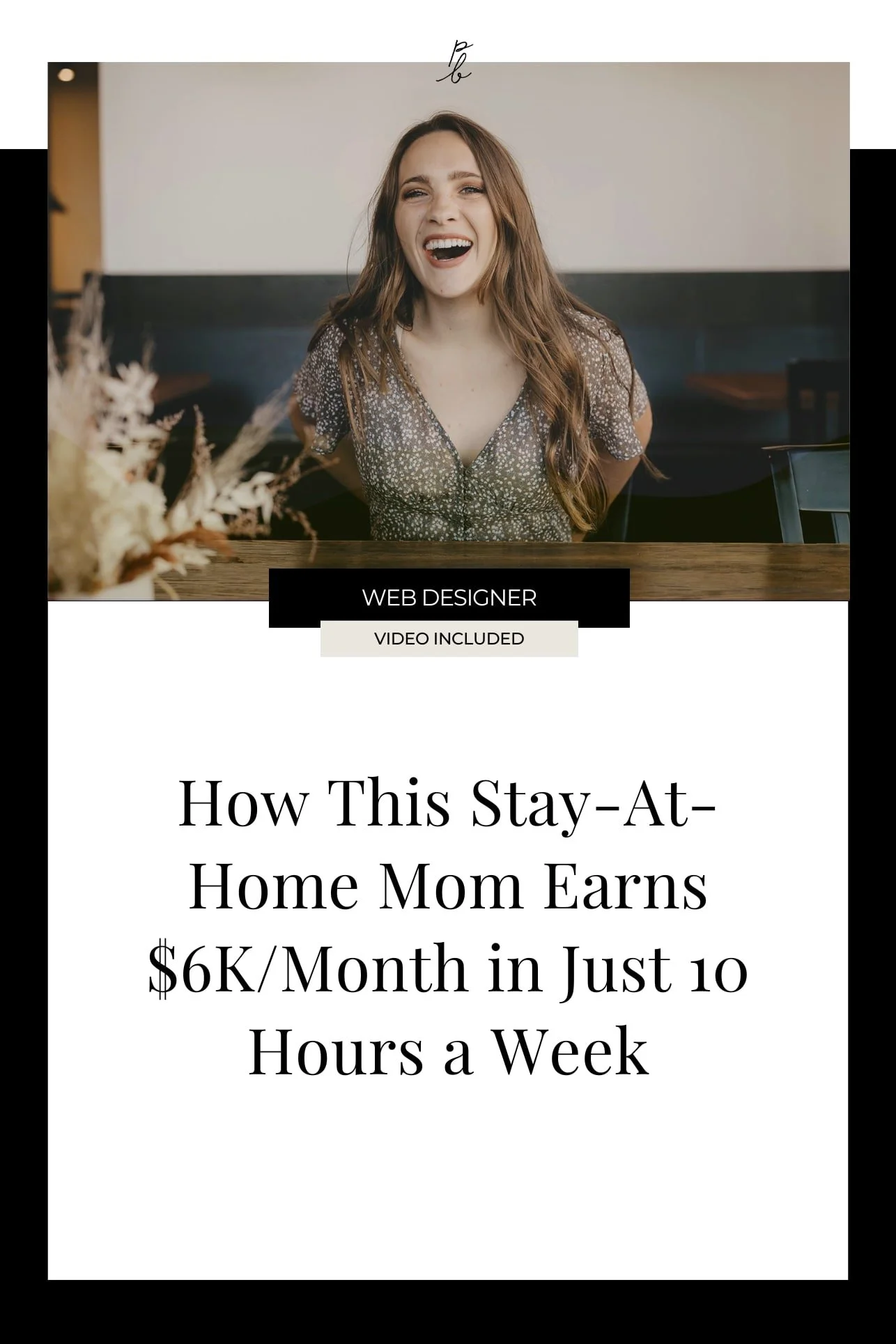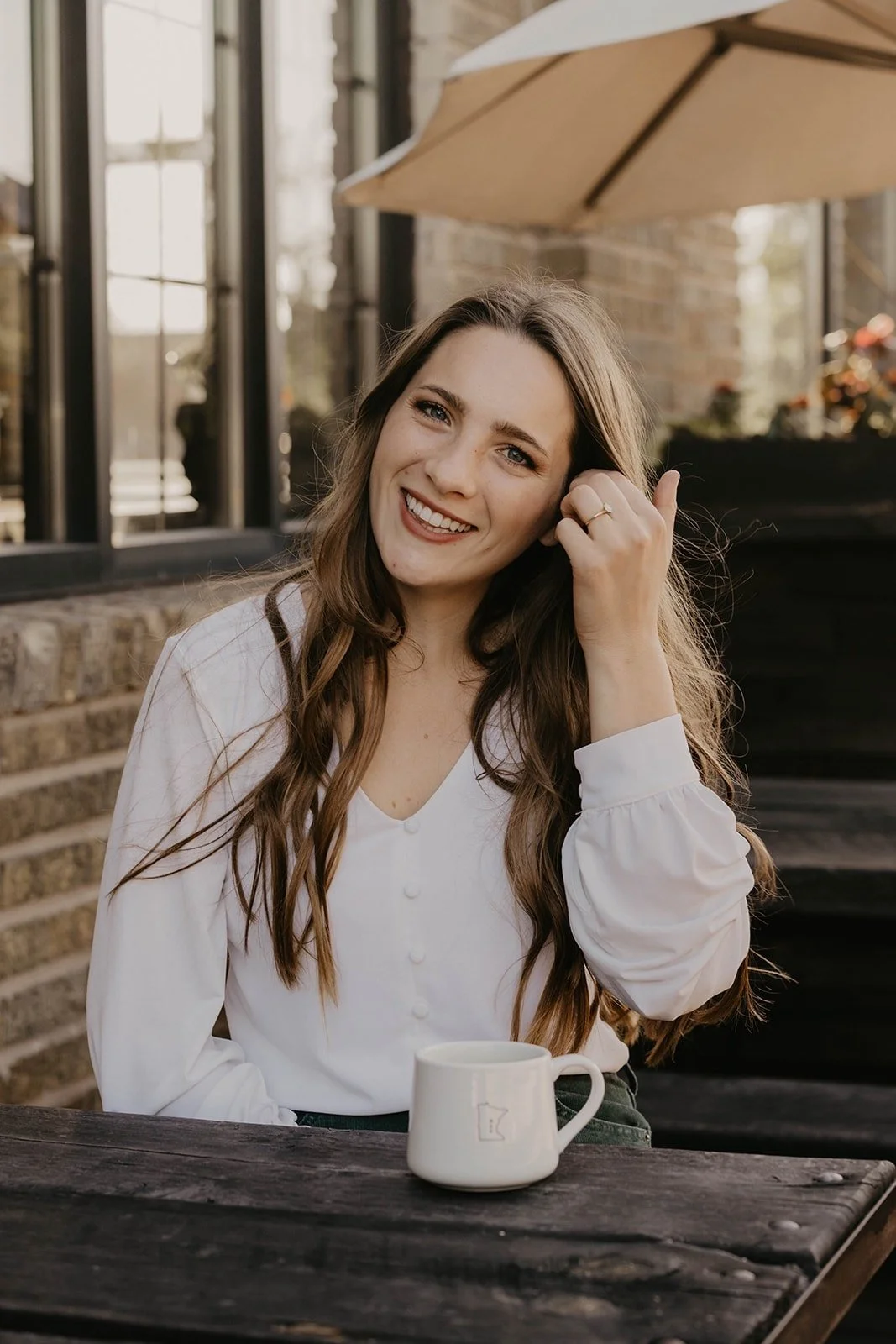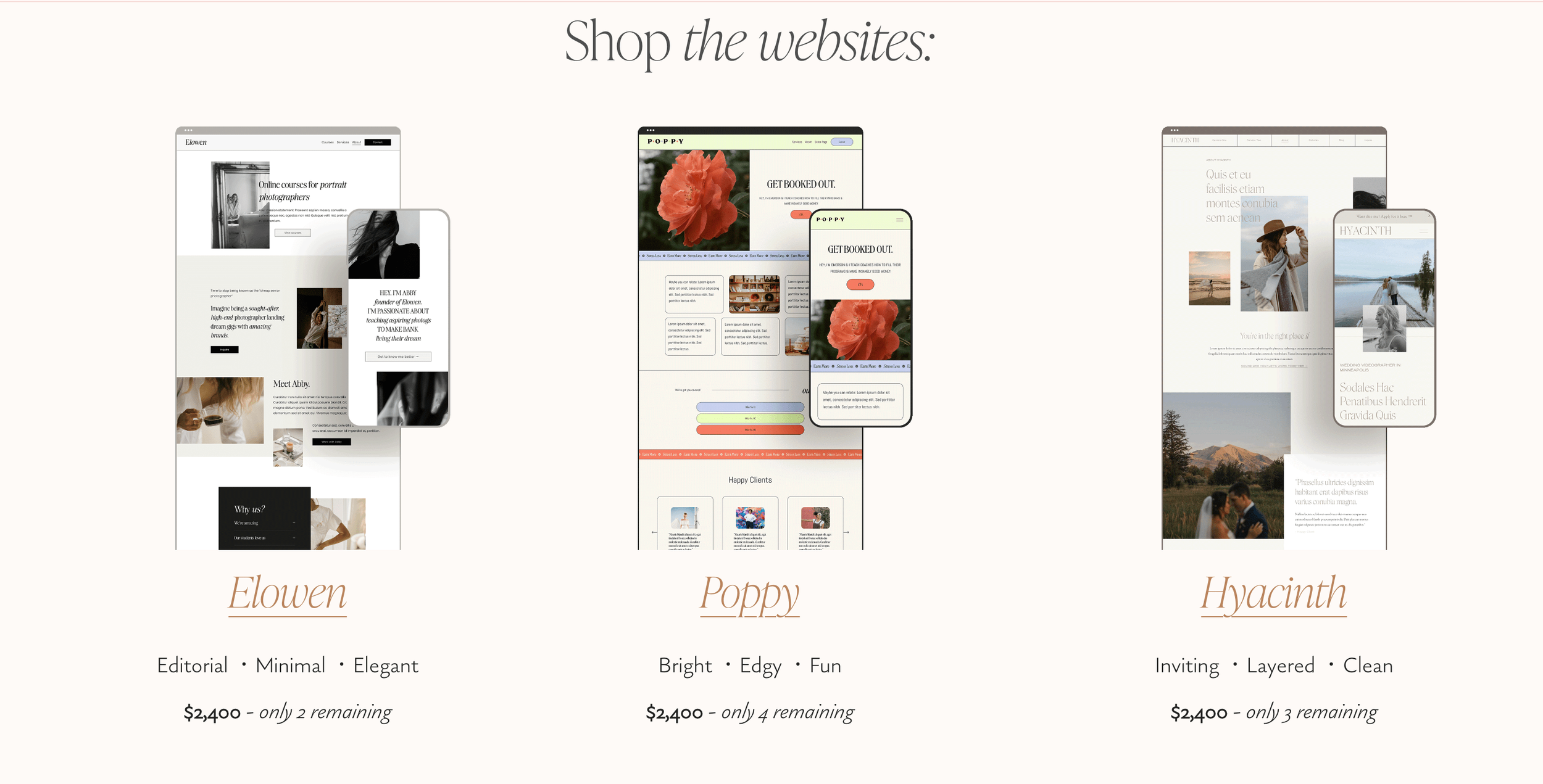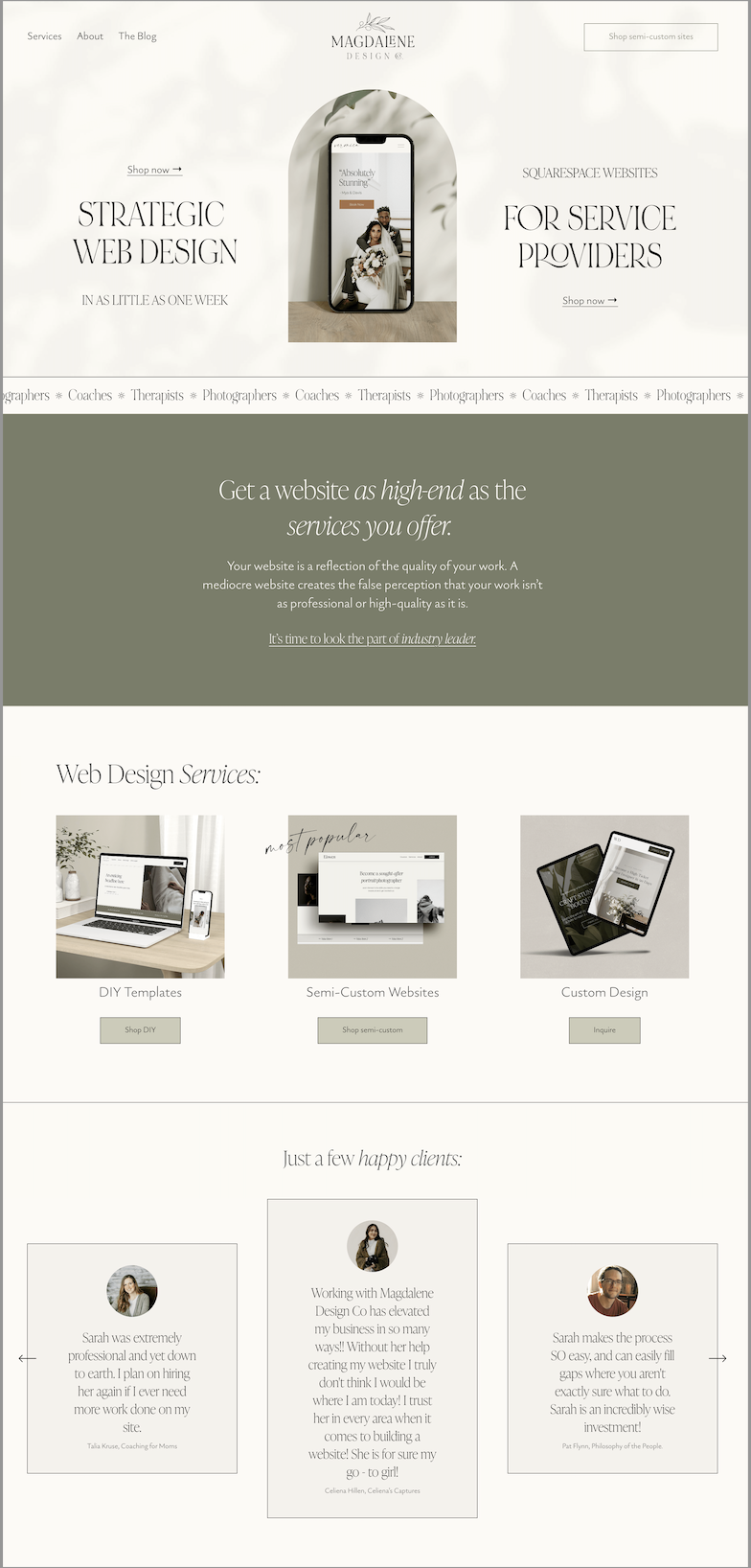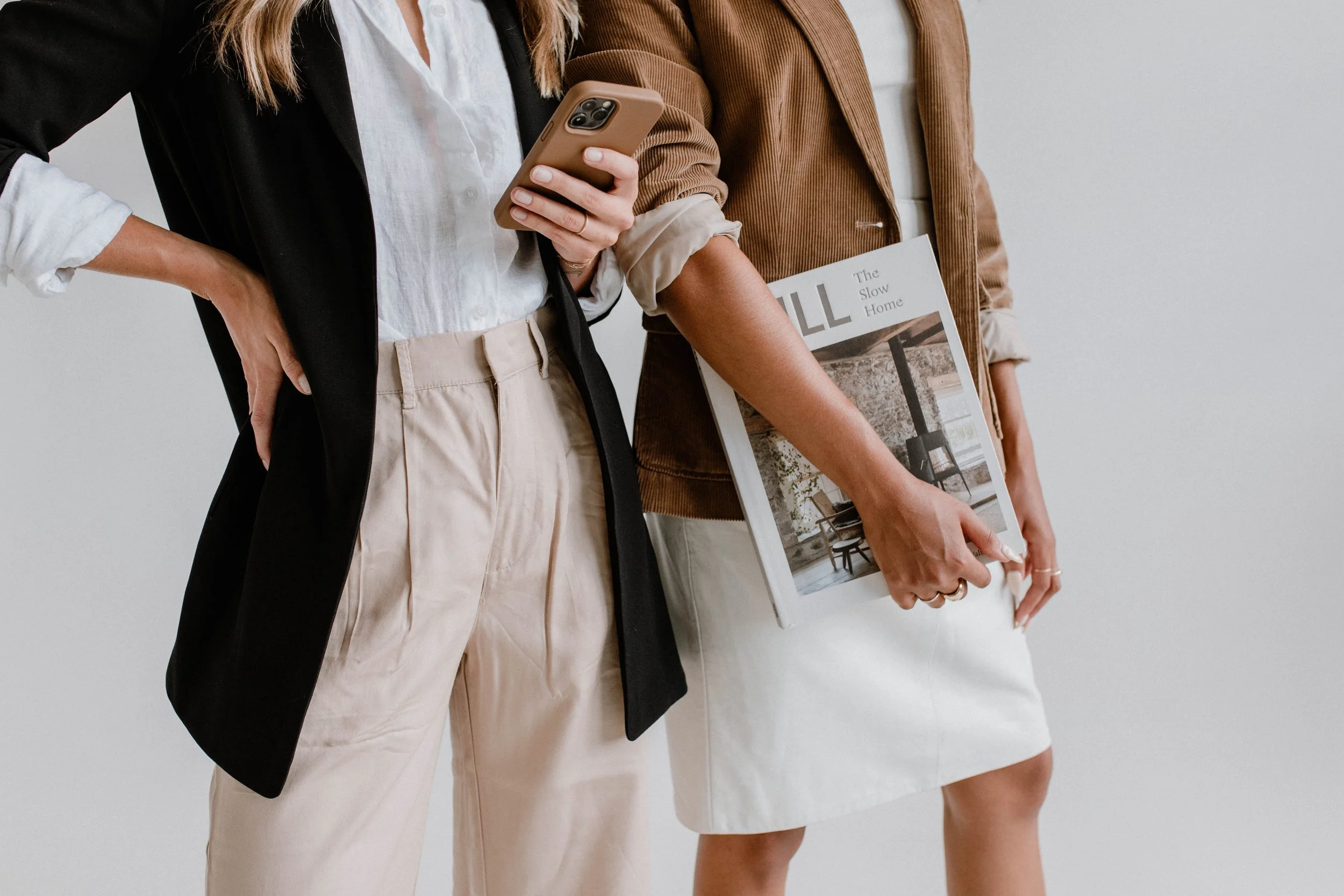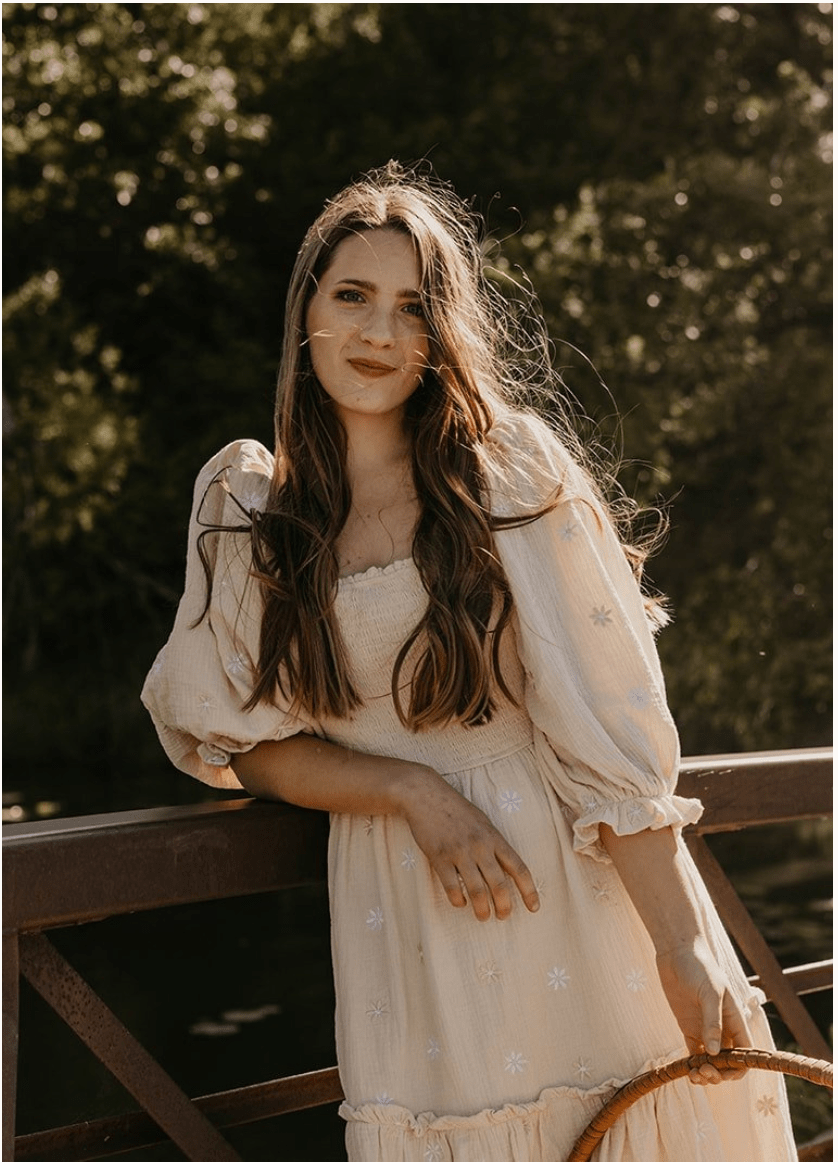How This Stay-At-Home Mom Earns $6K/Month in Just 10 Hours a Week
Prefer to watch?
Here’s the video!
Mentioned in the Video:
*Yup - that’s an affiliate link! My margarita fund thanks you kindly!
Rather read all about it?
Sarah's bringing home the same income as her old 9-5, but here's the kicker—she's only working a quarter of the hours.
Just 10 hours a week, to be precise.
As a new mom, she's got efficiency down to an art form, and she's ready to share her ingenious hacks.
Now if the thought of being tied to social media for marketing makes you want to hide under your favorite throw, and blogging feels about as appealing as cold espresso, you're in for a treat.
Sarah's uncovered two absolutely genius marketing strategies that have her calendar booked solid—no Instagram stories or blog posts required.
So, grab your favorite cuppa and settle in for an inspiring chat with my wonderful past Square Secrets Business student, Sarah, the mastermind behind Magdalene Design Co.
Paige: All right, Sarah, what exactly were you doing before you became a designer and did you have any web design experience?
Sarah: Before I became a web designer, I actually worked as a legal assistant for a hot second before I realized that corporate life wasn't for me.
I had a small existential crisis, and then I became a receptionist, making about $20 an hour. In that receptionist role, I became a bit of a marketer. It was a really small nonprofit, so we all wore a lot of hats, and I kind of did the marketing.
That's when I first dipped my toes into Squarespace web design.
I built their website for them. I actually built two of their websites, and I didn't think that was like a career you could have. The CEO was like,
"I know someone that wants a website, you want to do that?"
And I was like,
"Someone would pay me to do that? What?"
That's when it first came to mind that I could actually do that for a living, but I didn't really have any experience other than that. I had taken a couple of graphic design courses in college.
Paige: When did it occur to you that maybe you could do that as a legitimate job?
Sarah: Honestly, I think I had come across one of your blogs as I was building out their sites because it was the first time I'd ever dipped my toes in web design.
So I came across one of your blogs and then subsequently your course.
That's when I realized,
"Oh, people are doing this for a living."
And so I got on your email list and the rest is history.
Paige: Can you describe the different offerings that you have and also the price points on those?
Sarah: Yes. I have DIY templates that are freshly live this fall!
Then I have a two-week website, which is kind of like what you teach in the course, except that I do those as semi-custom, so I don't do those from a template. Those are $2,400, and they take me anywhere from 10 to 20 hours of work.
Then I do custom at $4,000.
Paige: Something which people who are launching a template shop think about is how to create templates for either this semi-custom option or for selling.
How did you figure out what the design and style of those templates should be?
Sarah: I think just from my experience and work, I work with a lot of photographers and therapists.
The photographers I work with are often younger women, and they have a certain aesthetic they like. A lot of the therapists too - I work with a lot of younger therapists who have that certain more refined, editorial, elegant aesthetic.
So just my experience with that is what decided my direction and how I would design the templates.
Paige: Okay. Those are two kind of different ideal clients as well. Can you talk about niche?
Sarah: Yeah, I was like,
"Paige is going to be disappointed in me today."
I did not niche.
I had a really hard time niching, and I know a lot of people do. It took me three years to get to the point where I'm making a full-time income, and I think that's probably because I didn't niche right away.
As a beginner designer, you want to work with everybody.
Right now, I'd say that my niche is online service providers, which is still really vague and broad, but I just got into photographers and therapists, and now I just get referrals from them.
I actually work with an SEO agency as one of my clients, and she sends me a lot of work for therapists. That's kind of how I got into photographers and therapists.
Now I'm like "online service providers," which is working for me. I think I'm going to trend towards niching in style, actually. As I'm redoing my website, that's how I'm going to market it.
Check-out Sarah’s website here. 👉
Her style is very clear so I totally get why she chose to niche by style!
Paige: Coming back to when you were working this job - you mentioned it took you a few years until you went full-time as a website designer. Can you walk me through going from working for someone else to working for yourself? What did that journey look like?
Sarah: Working at this nonprofit, making $20 an hour, I was like,
"This is not what I want to do for the rest of my life."
I came across your course, jumped in, and decided I was going to be a web designer. I was like,
"I'm going to be full-time within three months."
You know, that was my goal.
I had a lot of mindset issues, honestly. I think if I had worked through those early on, that would have been really helpful. But in the grand scheme of things, three years is not a long time either.
I think if you go into it thinking like, "
I'll be full-time within three years,"
that's a really good goal too.
Because a lot of people just quit business right away. It's a success to still be going, I think.
The journey was just a lot mindset-wise. Once I joined an online coaching program to get some more one-on-one support, that was really helpful. I think working through those things is what really helped me put the blinders on and focus.
Paige: That's another thing which people really struggle with - how to determine when they're ready to go full-time. What was that decision like for you?
Sarah: I've heard it both ways.
Some people need the push of just cutting all ties, jumping in and doing it.
I think you need to know yourself and know if you'd be comfortable once you're making maybe half of your previous income, or maybe you totally replace your income before you go full-time.
I think it really depends on a lot of things, like if you're single or if you have a family.
You have to just know where you're at and what you're comfortable with.
Paige: You mentioned you were fully booked. Congratulations! What do you think you're doing differently than designers who are struggling to book themselves and their business?
Sarah: I think my biggest thing has been strategic partnerships.
I didn't really do social media, I tried the blogging thing but that was tough for me. Consistency has been tough, especially with a 15-month-old.
So I decided strategic partnerships and cold emailing were going to be my strategies, and that's how it's worked for me.
One of my strategic partnerships is with an SEO agency, and she sends me a lot of work each month. So that's been a blessing.
Paige: If someone wants to set up a strategic partnership, how do they go about it?
Sarah: Cold emailing. Everything kind of starts back with how I got my initial clients from a Facebook group and then also cold emails.
That's how I met this woman - I had seen that she was looking for a designer, but her job posting was down. So I just emailed her and was like,
"Hey, I would love to work together if you feel like there's an opportunity."
And she was like,
"Yeah, actually, that would be great."
So we've been working together for over a year now.
Paige: And then tell me about cold emailing. Have you learned anything about successful cold emails over time?
Sarah: Yes, I have tried a few things. I also had mindset issues about cold emails like,
"This isn't a real marketing strategy. You're not getting leads on autopilot."
But then I think: there are industries built on the backs of cold emailing.
I tried the bulk emails, like just no personalization.
I would send them to like 100 people.
And then I would try really picking out specific people I wanted to reach out to, really personalizing with their name.
I never did the custom video or anything for them.
Honestly, the response rate was similar.
If I sent like ten really personalized emails, I would get 1 or 2 responses. And if I sent 100 really broad, vague emails, I'd get like 1 or 2 responses. But overall, I think the quality of responses was better from the more personalized ones.
Paige: If someone's thinking about doing cold email as a marketing strategy, what's a typical hit rate?
Sarah: Yeah, honestly, for a while I was sending ten emails and getting one client, which I think is probably not common.
It was cold emails, but I was being picky about who I was emailing.
So I think probably if you send like 50 emails, you should expect to be able to get at least a client from that. And multiple responses.
Paige: Can you tell me what normally goes into an email? What are you saying roughly?
Sarah: In the beginning, it was like,
"Hey, I'm trying to build my portfolio. I would love to work within your budget."
People like that. And then I would show them my typical price anyway, and I'd be like,
"How does that work for you?"
A lot of times, I'd be flexible.
But now, with more experience, I don't necessarily want to sell work within their budget.
I like to go for people who are local. It feels more legitimate to them if I'm like,
"Hey, I'm a local web designer in your area. This is my experience. This is how I think that I could benefit you."
That works too. I think the local piece, for some reason, just feels more legitimate than the typical emails you get, especially if you're like,
"We could meet up in person."
It's like,
"Oh, this isn't a typical spam email."
Paige: It also shows that there's so much opportunity. Some people think, "Oh, there are so many website designers, so there's no opportunity for me." But there is something to be said for if you want to work with people in your area.
Sarah: Definitely. And actually photographers feels like a really oversaturated niche for web designers. But I would get responses from photographers who are like,
"Thank you for doing this. We need you. We need web designers for photographers."
I'm like,
"Don't you know there's a billion of us out there?"
But they just don't know.
Paige: So what would you say to someone who's like, "Oh, I'm not sure if I should get into it. It feels like a saturated market." What is your experience for photographers specifically?
Sarah: I think go for it if that's who you want to work with.
And I think especially if you have a unique style, there's always going to be specific people who want to work with you.
I think reaching for style in the photography industry might be a little more important, because there are a lot of web designers, especially with ShowIt.
I think ShowIt designers have a really common aesthetic. So I think if you can differentiate your style within the photography niche, that would be beneficial.
Paige: Do you need to do ShowIt if you want to work with photographers?
Sarah: I did look into ShowIt because I thought I needed it for photographers, but honestly, I don't think that's necessary.
There are going to be photographers who specifically want ShowIt, and that's fine. You're just not for them.
But in my experience, a lot of photographers don't even know or care about the different platforms. If they like your style, if they want a marketing-friendly website, it doesn't matter to them what platform you're on.
I didn't know about ShowIt until after I had taken your course. So I was already Team Squarespace.
When ShowIt became more popular, I looked into it, but I decided I like Squarespace better.
I know Squarespace has a solid base and following, it's always improving, and it's easy for my clients to update. They really like it. So that's why I decided to stay with Squarespace and not bother with ShowIt.
Paige: Tell me about your earnings now versus your past jobs, and the number of hours you're working.
Sarah: As I mentioned, I was working full-time at a nonprofit making $20 an hour.
I also did a quick stint at an agency where I would have made about $50,000 a year. It was a Squarespace web design agency, actually. They started to not do so well, so they had to do layoffs.
It ended up being a blessing because now I'm working about ten hours a week, averaging $100 an hour, and I'm going to make that same salary but in a quarter of the time.
Paige: What are you doing in those ten hours a week? How many clients can you take on?
Sarah: I primarily do those semi-custom two-week websites. I've gotten to a point where that's just such a smooth process that I don't spend a lot of time on it.
I also have hired a contractor who takes 1 or 2 of them a month. So that's just some more passive income coming in.
That's how I'm able to make a full-time income - with the contractor and just a really smooth process.
It doesn't take me a lot of time, even though I'm not charging huge amounts. It's $2,400 for a semi-custom, but for me, it's really easy and simple to get those out and just churn through them.
Paige: How many hours does it take you on average for the semi-custom versus the full custom?
Sarah: For semi-custom, I would say it takes me 15 to 20 hours. For a custom design, it's probably at least double that.
Paige: You mentioned you have a 15-month-old. How does web design work with mom life?
Sarah: When I took your course, I wasn't a mom.
I was 23 years old and just knew I didn't want to be a receptionist/ marketer forever.
Now I'm like, wow, what a blessing that I have this!
I work during nap times and then some evenings.
If I'm really busy, I'll go to my parents' for a couple days to get some focus work done.
But primarily I just work around my little one's schedule.
It's such a gift to be able to be home with him and not have to put him in daycare.
I love that, and there's not a day that goes by that I'm not really grateful for that.
Paige: Take me back to the beginning. How did you get your first few clients?
Sarah: When I took your course, I planned to do Pinterest and blogging, but I didn't really stick with it.
I got my first few clients from a Facebook group. I just introduced myself. That's how I got my first few clients.
After that, it was cold emails, which I thought would just be a temporary strategy, but it's turned out to work well for me.
Then the strategic partnerships came along. So basically, it all comes back to cold emailing and Facebook groups, and now some referrals.
Paige: Tell me about the Facebook group. What have you found in terms of which groups work better?
Sarah: This was a really specific Facebook group called Catholic Women in Business.
In the beginning, I was working with Christian women, so that worked really well. I've since broadened my niche.
I think it worked because it was a really active, small group.
I've tried the really big groups and they get zero engagement. There's a lot of spam in those groups. So I think the key is finding a specific, engaged group.
Paige: What numbers would you say are good for small and large groups?
Sarah: When I posted in this group, I think there were about 4,000 members. It's since grown, but the big groups are like the 50,000 member ones.
Honestly, I think under 10,000 would be good, even smaller. Don't be afraid of posting in quite a small group.
Paige: Tell me more about your strategic partnerships. How did you approach that?
Sarah: For the SEO agency partnership, I saw that she had a job posting for a web designer, so I knew she was interested.
I didn't want a job, I just wanted to be a contractor for her. I think finding people that you think will align with you and have similar niches is helpful.
It doesn't hurt to ask - you could send a million emails and the only loss is time.
I think you'll be rewarded by sending them, just focus on people that you think you and your clients would both benefit from.
Paige: You mentioned mindset was holding you back. What were the fears, and how did you get through them?
Sarah: It was so much imposter syndrome, which I know any new designer or entrepreneur will struggle with.
It's like,
"I'm not good enough. There are so many designers out there, they're so much better than me. Why would anyone pick me over them?"
I kind of came back to the idea that just because it's not perfect doesn't mean it's not good, and it doesn't mean it's not a perfect fit for someone.
Your client might not like another designer's style, but they like your specific style.
There's a business coach in my group coaching who says to aim for
"B minus work."
Get it out there. You can always make it better once it's out.
Those were some helpful things for me to just buck up and do it. I can make it better as I go. I'm always growing as a designer. It doesn't need to be perfect right now.
Paige: For someone who's on the fence about my courses, can you give your experienced opinion?
Sarah: I honestly would recommend it to anyone. It has been, not to be dramatic, but life-changing.
Being able to stay at home with my son makes me want to tear up. If I hadn't taken that course, I'd probably have to put him in daycare and I'd be working a regular job and I would hate my life.
Now I get to work when I want to. I have the skills that I need from your course and the confidence I need.
Even though you're still going to struggle with imposter syndrome, it really does give you the confidence you need to just start.
I wouldn't take it back for anything and I would recommend it to anybody.
Feeling inspired to craft a dream job à la Sarah?
You're in the right place!
On October 21st, 22nd, and 23rd, I'm hosting my ever-popular event—the Profitable & Productive Web Designer Bootcamp.
It's complimentary, it's invaluable, and it's the very same event that sparked Sarah's journey from web design curious to bona fide business owner.
Join me for 3 days of live sessions, where I'll be your personal guide on the path to building a web design business so delightful, you'll be springing out of bed each morning!
(though as your own boss, you can absolutely hit snooze until 11 if that's more your style).
We'll dive into the systems and processes that make running your business as smooth as silk—from attracting dream clients to mapping your route to six figures and beyond.
And the cherry on top? You'll be surrounded by the loveliest, most supportive crowd this side of the internet.
But don't just take my word for it—some of my incredibly successful students, like Sarah, will be there to share their own business-building wisdom.
They've mastered the art of the lifestyle-first business, and they're ready to share their secrets.
So, are you ready to take the first step toward your dream business? Grab your seat below & I’ll see you at Bootcamp!

